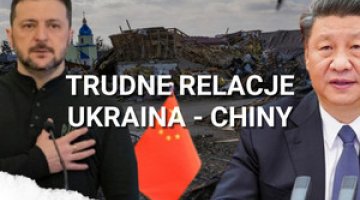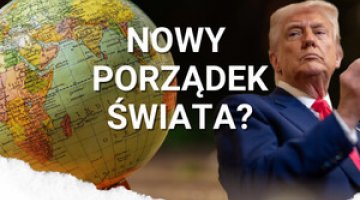Ukraine closer to the Customs Union?
On 31 May in Minsk, the Prime Minister of Ukraine Mykola Azarov signed a memorandum of deepening cooperation between Ukraine and the Eurasian Economic Commission (EuEC), which is the executive body of the Customs Union of Russia, Belarus and Kazakhstan (CU). The document’s content was finally agreed upon two days earlier in Astana, during a meeting of the CU’s heads of states with the President of Ukraine Viktor Yanukovych. The memorandum provides the establishment of a permanent Ukrainian representative in the CU, access for Ukraine to copies of the CU’s public documents, and the right to submit its own proposals to the EuEC. Kyiv also received the opportunity to participate in open meetings of the CU’s highest bodies, albeit only upon an official invitation. In Section 4 of the memorandum, Ukraine declared its “intention to abide by the rules” enshrined in the legal documents underlying the CU, and to “abstain from any actions and statements” which would affect the interests of the CU. The document is declarative in nature, and does not constitute a legal obligation to integrate with the CU; nor does it bar Ukraine from concluding an Association Agreement (AA) with the EU. The signing of the memorandum is part of the Ukrainian government’s manoeuvres between the CU and the EU; it is aimed at a short-term reduction of tension in relations with Moscow, and also (in Ukraine’s perception) as a mean of putting pressure on Brussels to sign the AA. In turn, Russia sees the document as a step on the way to forcing Ukraine into full membership of the CU and blocking co-operation between Kyiv and Brussels.
The legal nature of the document
The memorandum signed in Minsk is not an inter-state agreement, and carries no legal obligations for either party. Nor does the document contain any information on sanctions in case the signatories do not comply with its provisions. The memorandum does not give Ukraine formal observer status at the CU, and there is only a passing reference to Kyiv obtaining such a status in 2015, when the CU is to form the basis for the creation of the Eurasian Economic Union (EuEU). In sum, Ukraine has not in fact achieved the goals which it initially set for itself. The Ukrainian government had sought observer status at the CU, consent to participate in the EuEC’s work as a voting advisory, and access to all documents, including the drafts of decisions which the CU intends to take. Section 4 of the memorandum indicates that Ukraine has de facto given Russia an excuse to intervene in the relationship between Kyiv and Brussels.
The Ukrainian side’s calculations
For two years, Ukraine has worked to establish co-operation with the CU, without formally becoming a member. This action is calculated to minimise the losses to the Ukrainian economy which a common tariff policy within the CU could cause; currently the share of Russia, Belarus and Kazakhstan in Ukraine’s trade balance amounts to almost 40%, and any restrictions on access to these markets for Ukrainian goods could prove disastrous for Ukraine’s export-dependent economy. The government in Kyiv came up with an offer to co-operate in a 3+1 format, the aim of which was to ensure market access to the CU for Ukraine whilst refusing formal membership in the organisation – a move which would rule out the possibility of signing the AA with the EU. This strategy stems from a desire to reap the benefits of working with both the CU and the EU.
It can be assumed that Ukraine signed the CU memorandum for tactical reasons. On the one hand, Kyiv intends to ease the pressure from Russia to integrate fully with the CU; Ukraine will not benefit very much from it, but nor will it commit Kyiv to anything formally binding. On the other hand, we may assume that Kyiv sees the memorandum as an instrument for putting pressure on the EU, so that Brussels will ease the conditions for Ukraine to sign the AA at the summit in Vilnius in this November.
The Ukrainian side’s calculations, however, may prove to have been incorrect. The mere act of signing the memorandum has worsened Ukraine’s image in the West. The content of the document, which was negotiated during Viktor Yanukovych’s unexpected visit to Vladimir Putin in Sochi on 26 May, was not consulted with the EU, a fact which Brussels received with concern. It was only after the memorandum was signed that Kyiv made any attempt to explain to Brussels that the document is not inconsistent with the obligations of membership in the WTO or Ukraine’s stated desire to move closer to the EU.
Russia’s objectives
The summit in Astana has confirmed that incorporating Ukraine in the Eurasian integration project (on the basis of full membership in the CU and ultimately in the emerging EuEU) remains a strategic political goal for Russia. The adoption in Astana of the 3+1 format proposed by Kyiv (which Moscow had categorically rejected until recently) is on the one hand a tactical concession by Russia; but on the other hand, the Kremlin sees it as an intermediate step towards Ukraine’s full participation in the process of Eurasian integration. Moscow is aware of the political game Kyiv is playing, and in fact assumes that the difficult economic situation in Ukraine, its continued energy dependence on Russia, and its unpreparedness to meet all the conditions set by the EU, will prove to be the factors which force the Ukrainian government to accept the Russian offer.
The signing of the memorandum proves that blocking the progress of Ukraine’s integration with the EU, in particular preventing Kyiv from signing the AA with the EU in Vilnius, is an important goal for Russia. In the coming months, we should expect Russia to attempt to cool relations between Ukraine and the EU. Firstly, Moscow will try to exploit in the media the declarations that Ukraine accepted in the memorandum, specifically its readiness to recognise the principles forming the legal basis of the CU and EuEU, and that it will refrain from making any actions or statements which may be prejudicial to the interests of these structures’ member states. Secondly, it will seek to implement the measures announced in Astana: preparing by this October the appropriate changes in the agreements governing the Eurasian integration process, which would allow Ukraine to sign the legally binding documents at the next summit of the CU presidents in December, formalising its observer status in the CU and the future EuEU. Thirdly, it cannot be ruled out that Moscow will try to exert political pressure on Kyiv as part of their ongoing, difficult gas negotiations (which have lasted many months), which concern both Russian gas supplies and Russia’s willingness to gain control of Ukraine’s gas pipeline network.
Conclusions
Both Ukraine and Russia see the findings of the Astana meeting and the Minsk memorandum as tactical concessions. Indirectly, this indicates that as yet the parties have not developed a consensus on the scope and direction of how Kyiv’s cooperation with the CU will deepen; these issues will be the subject of further negotiations. At the same time, the closed and non-transparent nature of the process of negotiating the document and the vague provisions of its Section 4 have reinforced the image of Ukraine as a country with low credibility, whose declaration of a European priority in its foreign policy stands in contradiction to the activities it is really undertaking. This perception of Ukraine in the EU is in the strategic interests of Russia, which is blocking the signing of the AA between Kyiv and Brussels.





